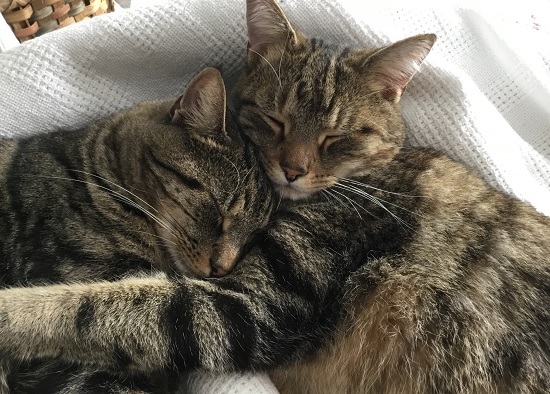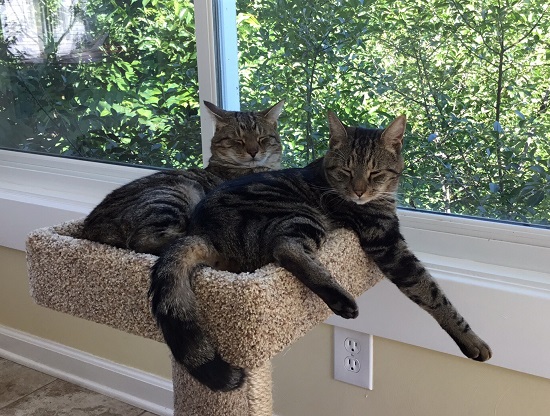I define “yeses” as the realities that create the context of my existence, stated as precisely as I can perceive them. I may wish – even long – for these realities to be different. I may have intense feelings about these realities. However, I acknowledge these realities as givens, neither powers nor perpetrators. I do not surrender to them or become a victim of them. I acknowledge them.
Note: This post is intended as a worksheet. As a result of sorting the realities of one’s situation from beliefs or unproven hypotheses about one’s situation, a person can then shift the energy and creativity of their attention from what-ifs to realities.
Please complete all sections in a short amount of time, briefly, with straightforward answers, few details, little to no explanation, self-kindness, and compassion. I provide personal examples of answers.
Demographics and Geography
I am __________________. I am not different or other, not younger or older, not brighter or less bright, not better looking or worse looking, not more or less physically fit, not more or less educated, not more or less accomplished, and not wealthier or poorer. Although I or others may have wished for this, I am not __________________ or __________________.
I live in __________________, not in __________________.
Example
I am a Caucasian female, aged 64, a former teacher and a current counselor. Although I or others may have wished for this, I am not a holder of a Ph.D. or a famous contributor to great thinking.
I live in a small college town, in a rural area, with a small population, with a small number of people my age, and with a small number of businesses, restaurants, and organizations, not in a city with a large population, with a large number of people my age, and with a large number of businesses, restaurants, and organizations.
Upbringing
To gently paraphrase poet Philip Larkin, our parents and caregivers have both positive and negative impacts upon us.
The greatest legacy burdens that linger from my upbringing are __________________, __________________, and __________________.
The greatest gifts given me by my upbringing are __________________, __________________, and __________________.
Example
The greatest legacy burdens that linger from my upbringing are the belief that people and situations should be a particular way, that feeling feelings is a characterological weakness, and that position in society has power.
The greatest gifts given me by my upbringing are problem identification and strategic derivation of solutions, love of ideas and learning, and being taken seriously.
Personal traits
I have been told more than once, by more than one person who appreciated me, that I am __________________, __________________, and __________________.
Example: I have been told more than once, by more than one person who appreciated me, that I am intelligent, generous, and ahead of my time.
Strengths
When opportunities and challenges arise, whether I am working alone or with others, I bring these strengths to the task: __________________, __________________, and __________________.
Example: When opportunities and challenges arise, whether I am working alone or with others, I bring these strengths to the task: creativity, discipline, and determination.
History
If a Wikipedia entry were written about me, with priority given to listing the top events with the most impact on my life, including the way I think about myself, others, and the way the world works, the top hardships I have survived are:
1. __________________
2. __________________
3. __________________
Example
The top hardships I have survived are:
1. Inability to conceive a child.
2. Witnessing my father suffer mental and physical torture from dementia.
3. Losing my existential freedom from a concussion.
Stressors
The three greatest, current stressors in my daily life are 1) __________________, 2) __________________, and 3) __________________.
The three greatest, on-going stressors in my life are 1) __________________, 2) __________________, and 3) __________________.
Example
The three greatest, current stressors in my daily life are 1) adult cats, casualties of the pandemic, who have reverted to kitten-like behavior from too much time, in too small of a space, spent with their caregiver; 2) maintaining a house for said kittens, myself, and housemates who are international visiting scholars, 3) intermittent concussion symptoms.
The three greatest, on-going stressors in my life are 1) how to make a life for myself at this age, in this town, in a pandemic (!), after serving a decade as a caregiver; 2) determining what is possibly mine to do in the time I have left; 3) the push-pull of alternately rejecting and accepting the realities of aging.
Accomplishments
My greatest accomplishments in the past three years, 2020-2023, have been: 1) __________________, 2) __________________, and 3) __________________.
My greatest accomplishments in my life so far have been: 1) __________________, 2) __________________, and 3) __________________.
Example
My greatest accomplishments in the past three years, 2020-2023, have been: 1) not despairing over the losses I have experienced; 2) co-gardening with my neighbor who, sequentially, turned 89, 90, and 91; 3) contributing to science by providing a pleasant, supportive – albeit cat-dominated – home for international visiting scholars.
My greatest accomplishments in my life so far have been: 1) serving as a teacher, counselor, and mentor; 2) standing by my father in his time of greatest bafflement, vulnerability, and suffering; 3) not once not getting out of bed, no matter what had happened the day before.
Learnings
My three greatest learnings in the past three years, 2020-2023, have been: 1) __________________, 2) __________________, and 3) __________________.
My three greatest learnings in the past three years, 2020-2023, have been: 1) the neuroscience of grief, 2) the 1,000 most frequently used characters in Mandarin Chinese, and 3) the results of deep dives into existential theory and existential therapy.
Joys
The three greatest joys currently in my life are 1) __________________, 2) __________________, and 3) __________________.
Example
The three greatest joys currently in my life are the kitten brothers, Ken and Ted, learning Mandarin Chinese, and 200-piece jigsaw puzzles.
Connectedness
Although research varies on the number of people we need in our lives to sustain mental and physical health, and individual needs and preferences vary, most people experience a sense of well-being from having a “my person” – often a partner, best friend, or family member – an “inner circle,” and “affiliations.”
The pandemic forced disconnectedness on many people. For many people, restoring connectedness is a work-in-progress. Please up the ante on self-kindness as you complete this section.
“My person” is __________________. Of all the people in my life, this is my closest confidante and ally. This person appreciates me as I am. I can count on this person to hear my feelings, thoughts, fears, and dreams without judgment or advice-giving.
In my “inner circle,” I prefer _____ people. I have _____ people. These are the people with whom I have mutual, lateral, reciprocal, giving-and-receiving relationships. Contact is frequent enough, and of enough duration, to maintain a sense of connection during absence.
Among my “affiliations,” I prefer _____ people. I have _____ people. These are the people with whom I may have infrequent contact. Although our time together, views, and lifestyles may vary, we have shared interests and mutual regard.
Example
My person is my sister. In my inner circle, I prefer 3 people. I have none. This reality is a problem to solve to which I bring my strengths. Among my affiliations, I prefer 8 people. I have 8+ people.
Future
Although the future is unpredictable and uncertain, possibilities I am considering for the future are: 1) __________________, 2) __________________, and 3) __________________.
Although the future is uncertain, possibilities I am considering are: 1) volunteering, 2) traveling to China when concussion symptoms resolve, 3) continuing to write independence-fostering, counseling-informed guides for clients and readers.
. . . . .
Awareness of reality can assist with emotion regulation.
The ability to regulate emotions is considered a primary feature of skillful, effective living and relating. Emotion dysregulation is considered a primary, central component – the transdiagnostic construct – of many relationship and work problems, of anxiety and depression, or overuse of substances, and of many mental illnesses.
When functioning effectively, a person is able feel feelings, think thoughts, and adjust the intensity of their inner experience at will, on command, then make conscious choices about what to say and do next – or not say and not do.
A person can learn emotion regulation skills. Here are some possibilities for independent study:
- Learn about the interrelationship between what happens, one’s thoughts, and one’s feelings using pie charts, diagrams of the brain, the ABC worksheet from CBT, and the concept of Wise Mind from DBT.
- Make an Inner Volume Control Dial with a Paper Plate.
- Examine this step-by-step description of the emotion regulation process.
- Expand thinking about responsibility and causality by using the three-lane highway metaphor.
- Learn how to muscularly shift attention using one’s senses, and values and priorities.
- Learn about the human brain’s beautiful evolution to have the whole brain work in synergy together. The overlap between feelings and thoughts – both of which provide data – is the realm of inner wisdom, the source of effective, skillful, humane decision-making.
- Learn that the acts of suppressing, blocking, numbing, and/or avoiding feelings, although reducing pain in the short-term, actually rob the full brain of its capacity for synergy. What to do with painful feelings is the work of people working on emotion regulation.
- Become aware of the impact of the pandemic on one’s thinking using this 800-word worksheet.
- Use the existential awareness skills assessments and overviews on this 3,000-word page.
- Write a personal resilience guide using ideas such as these.
- Write a philosophy of life and death such as this one.
- Use the meditation app created by Jon Kabat-Zinn, founder of Mindfulness-Based Stress Reduction (MBSR),* first introduced to me in 2006 by a professor in my graduate program. As of this writing, the app is available as a subscription, around $2.50 per month, $25.00 per year.
*Mindfulness-Based Stress Reduction (MBSR), is an evidence-based protocol backed by decades of research, including brain imaging studies (2021), to assist with “Acting with awareness, Non-judgment, and Non-reactivity” (2022), anxiety disorders (2023), reduction in levels of anxiety, depression and stress (2022) – although results for depression are mixed (2022) – high-stress jobs such as nursing (2021) and teaching (2021), improving sleep quality in nurses (2021) and cancer survivors (2021), and with physical conditions such as boosting innate immunocompetence (2022), type 2 diabetes (2022), asthma (2022), cholesterol levels (2022), and hypertension (2021).
All content is for informational purposes only and is not a substitute for professional advice. Consult a qualified professional for personalized medical, health care, and professional advice.



